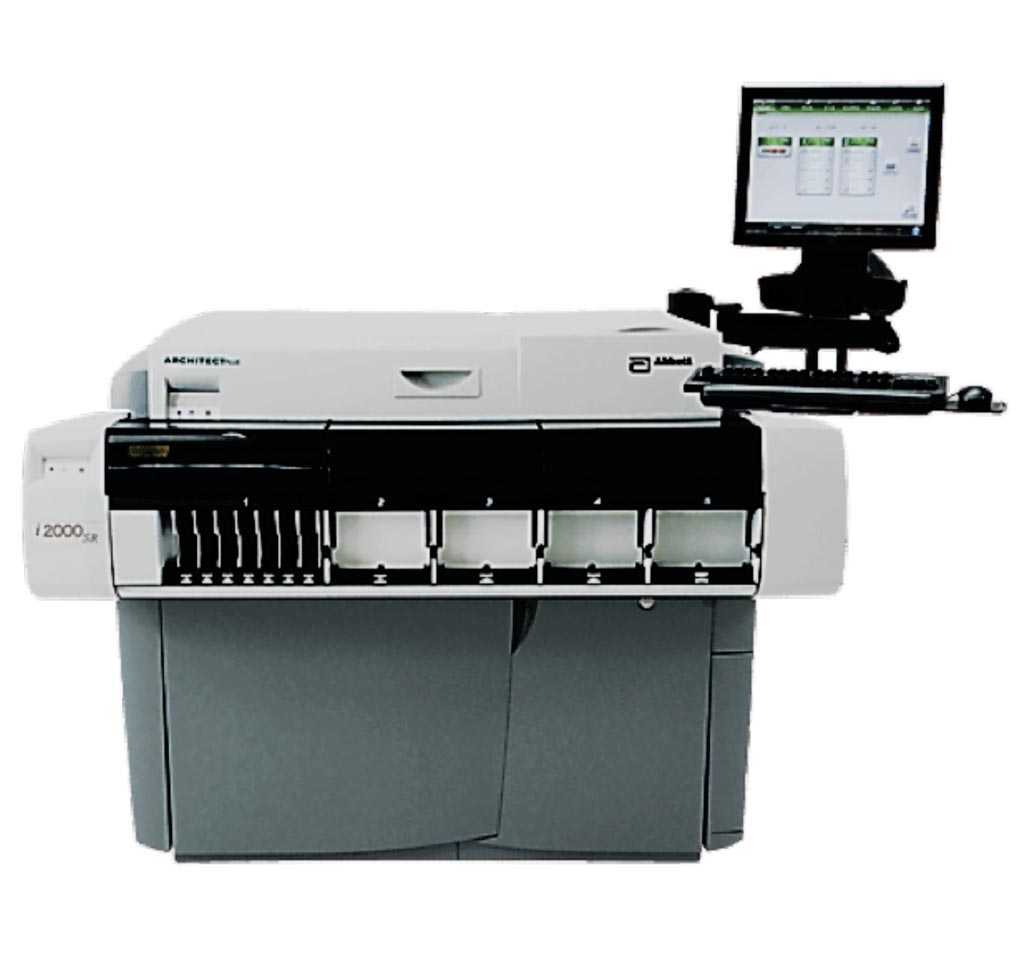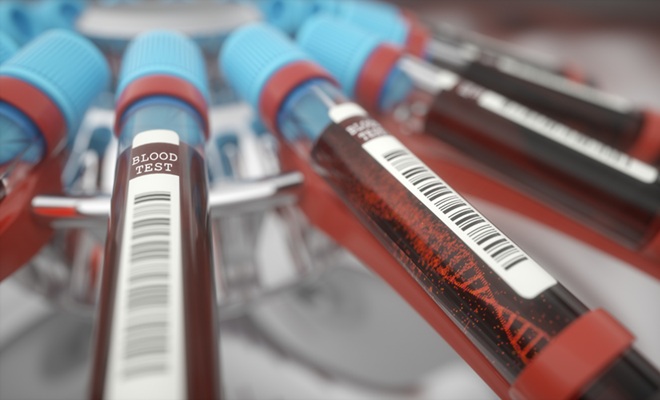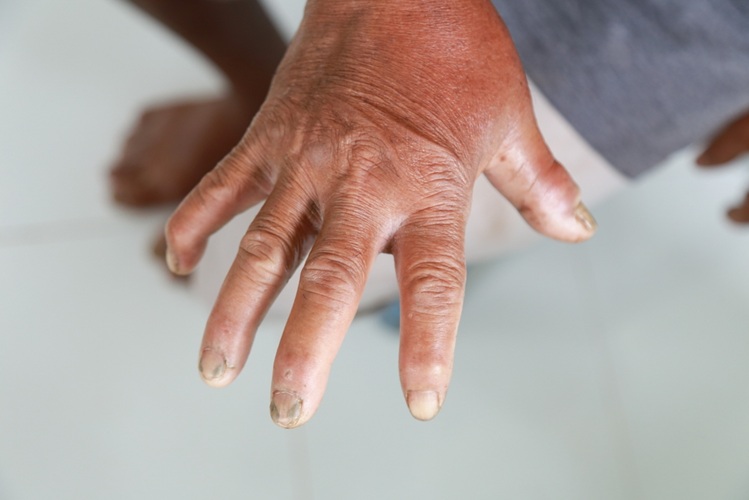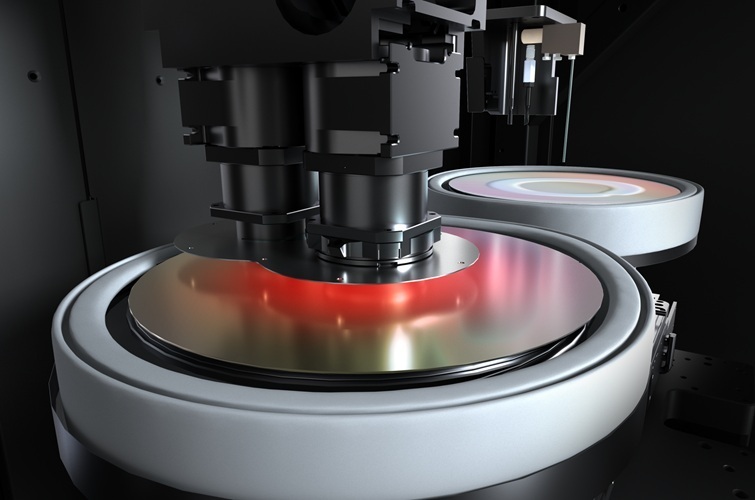Low Levels of IL-39 Associated With Autoimmune Thyroid Disease
|
By LabMedica International staff writers Posted on 03 Mar 2022 |

Interleukin (IL)-39 is a novel member of IL-12 cytokine family, but its role in autoimmune thyroid diseases (AITD) is unclear. The aim of the present study was to determine serum levels of IL-39 in Hashimoto's thyroiditis (HT) and Graves' disease (GD) patients.
Autoimmune thyroid disease (AITD) is a family of classic autoimmune disorders that mainly consists of Hashimoto's thyroiditis (HT) and Graves' disease (GD). The global prevalence of HT is estimated at 2%. A significant sign of HT is loss of self-tolerance to thyroid antigens.
Cytokines play a crucial role in the induction and action stages of immune and inflammatory responses. Imbalances between pre- and anti-inflammatory cytokines may play an important role in the occurrence and development of AITD. The interleukin-12 (IL-12) family plays a key role in immune responses through their functional, unique structural and immunological characteristics.
Clinical Scientists at the Ningbo University School of Medicine (Ningbo, China) recruited 98 patients with AITD were recruited at the Affiliated Lihuili Hospital of Ningbo University (Ningbo, China), including 48 with HT and 50 with GD. In addition, 45 healthy controls (HCs) without thyroid disease or other family histories of autoimmune diseases were enrolled.
Serum IL-39 level was detected by enzyme-linked immunosorbent assay (ELISA) kit (Shanghai Jianglai Biotechnology Co., Ltd, Shanghai, China). All measurements were conducted in duplicate. The staphylococcal protein A antigen sandwich method was used to quantitate anti-thyroid stimulating hormone (TSH) receptor (TSH-R) autoantibodies (TRAb) in human plasma.
A two-step immunoassay (Chemiflex, Abbott I-2000 Automatic Chemiluminescence Immunoassay Analyzer; Abbott, Abbott Park, IL, USA) was used to quantitate free triiodothyronine (FT3), free thyroxine (FT4), anti-thyroid stimulating hormone (TSH), anti-thyroglobulin antibody (TGAb), and anti-thyroid peroxidase antibody (TPOAb) in human plasma. C-reactive protein (CRP), and IL-39 as well as white blood count (WBC) count correlations in patients with AITD were analyzed between serum IL-39 levels and these parameters.
The investigators reported that IL-39 levels in patients with HT were slightly lower than those of HCs while IL-39 levels in patients with GD were significantly lower than those of HCs. Among patients with HT, serum IL-39 levels had a positive correlation with white blood cell count (WBC) count and free triiodothyronine level. Among patients with GD, the levels of IL-39 in serum were positively correlated with WBC count and CRP levels. There was no significant difference in IL-39 levels between HT and GD patients. In addition, the level of serum IL-39 had no significant difference with the gender of GD and HT patients and had no correlation with the age of GD and HT patients.
The authors concluded that they had found reduced levels of serum IL-39 in AITD patients. Serum IL-39 levels were positively correlated with thyroid-related and inflammatory indexes, suggesting that IL-39 may serve as a biomarker for assessing the severity of AITD. Furthermore, IL-39 may represent a new therapeutic target for AITD. The study was published on February 19, 2022 in the Journal of Clinical Laboratory Analysis.
Related Links:
Ningbo University School of Medicine
Affiliated Lihuili Hospital of Ningbo University
Shanghai Jianglai Biotechnology
Abbott
Latest Immunology News
- Stem Cell Test Predicts Treatment Outcome for Patients with Platinum-Resistant Ovarian Cancer
- Machine Learning-Enabled Blood Test Predicts Immunotherapy Response in Lymphoma Patients
- Post-Treatment Blood Test Could Inform Future Cancer Therapy Decisions
- Cerebrospinal Fluid Test Predicts Dangerous Side Effect of Cancer Treatment
- New Test Measures Preterm Infant Immunity Using Only Two Drops of Blood
- Simple Blood Test Could Help Choose Better Treatments for Patients with Recurrent Endometrial Cancer
- Novel Analytical Method Tracks Progression of Autoimmune Diseases
- 3D Bioprinted Gastric Cancer Model Uses Patient-Derived Tissue Fragments to Predict Drug Response
- Blood Test for Fungal Infections Could End Invasive Tissue Biopsies
- Cutting-Edge Microscopy Technology Enables Tailored Rheumatology Therapies
- New Discovery in Blood Immune Cells Paves Way for Parkinson's Disease Diagnostic Test
- AI Tool Uses Routine Blood Tests to Predict Immunotherapy Response for Various Cancers
- Blood Test Can Predict How Long Vaccine Immunity Will Last
- Microfluidic Chip-Based Device to Measure Viral Immunity
Channels
Clinical Chemistry
view channel
New Method Uses Pulsed Infrared Light to Find Cancer's 'Fingerprints' In Blood Plasma
Cancer diagnoses have traditionally relied on invasive or time-consuming procedures like tissue biopsies. Now, new research published in ACS Central Science introduces a method that utilizes pulsed infrared... Read more
Carbon Nanotubes Help Build Highly Accurate Sensors for Continuous Health Monitoring
Current sensors can measure various health indicators, such as blood glucose levels, in the body. However, there is a need to develop more accurate and sensitive sensor materials that can detect lower... Read moreMolecular Diagnostics
view channel
Gene-Based Blood Test Accurately Predicts Tumor Recurrence of Advanced Skin Cancer
Melanoma, an aggressive form of skin cancer, becomes extremely difficult to treat once it spreads to other parts of the body. For patients with metastatic melanoma tumors that cannot be surgically removed... Read more
Blood Test Could Identify Patients at Risk for Severe Scleroderma
Systemic sclerosis, also known as scleroderma, causes the hardening of the skin and connective tissues. In many cases, the disease can also damage vital organs, including the heart, kidneys, lungs, and... Read moreHematology
view channel
New Scoring System Predicts Risk of Developing Cancer from Common Blood Disorder
Clonal cytopenia of undetermined significance (CCUS) is a blood disorder commonly found in older adults, characterized by mutations in blood cells and a low blood count, but without any obvious cause or... Read more
Non-Invasive Prenatal Test for Fetal RhD Status Demonstrates 100% Accuracy
In the United States, approximately 15% of pregnant individuals are RhD-negative. However, in about 40% of these cases, the fetus is also RhD-negative, making the administration of RhoGAM unnecessary.... Read moreMicrobiology
view channel
Handheld Device Delivers Low-Cost TB Results in Less Than One Hour
Tuberculosis (TB) remains the deadliest infectious disease globally, affecting an estimated 10 million people annually. In 2021, about 4.2 million TB cases went undiagnosed or unreported, mainly due to... Read more
New AI-Based Method Improves Diagnosis of Drug-Resistant Infections
Drug-resistant infections, particularly those caused by deadly bacteria like tuberculosis and staphylococcus, are rapidly emerging as a global health emergency. These infections are more difficult to treat,... Read more
Breakthrough Diagnostic Technology Identifies Bacterial Infections with Almost 100% Accuracy within Three Hours
Rapid and precise identification of pathogenic microbes in patient samples is essential for the effective treatment of acute infectious diseases, such as sepsis. The fluorescence in situ hybridization... Read morePathology
view channel
New Error-Corrected Method to Help Detect Cancer from Blood Samples Alone
"Liquid biopsy" technology, which relies on blood tests for early cancer detection and monitoring cancer burden in patients, has the potential to transform cancer care. However, detecting the mutational... Read more
"Metal Detector" Algorithm Hunts Down Vulnerable Tumors
Scientists have developed an algorithm capable of functioning as a "metal detector" to identify vulnerable tumors, marking a significant advancement in personalized cancer treatment. This breakthrough... Read more
Novel Technique Uses ‘Sugar’ Signatures to Identify and Classify Pancreatic Cancer Cell Subtypes
Pancreatic cancer is often asymptomatic in its early stages, making it difficult to detect until it has progressed. Consequently, only 15% of pancreatic cancers are diagnosed early enough to allow for... Read moreTechnology
view channel
Pain-On-A-Chip Microfluidic Device Determines Types of Chronic Pain from Blood Samples
Chronic pain is a widespread condition that remains difficult to manage, and existing clinical methods for its treatment rely largely on self-reporting, which can be subjective and especially problematic... Read more
Innovative, Label-Free Ratiometric Fluorosensor Enables More Sensitive Viral RNA Detection
Viruses present a major global health risk, as demonstrated by recent pandemics, making early detection and identification essential for preventing new outbreaks. While traditional detection methods are... Read moreIndustry
view channel
Cepheid and Oxford Nanopore Technologies Partner on Advancing Automated Sequencing-Based Solutions
Cepheid (Sunnyvale, CA, USA), a leading molecular diagnostics company, and Oxford Nanopore Technologies (Oxford, UK), the company behind a new generation of sequencing-based molecular analysis technologies,... Read more
Grifols and Tecan’s IBL Collaborate on Advanced Biomarker Panels
Grifols (Barcelona, Spain), one of the world’s leading producers of plasma-derived medicines and innovative diagnostic solutions, is expanding its offer in clinical diagnostics through a strategic partnership... Read more






















